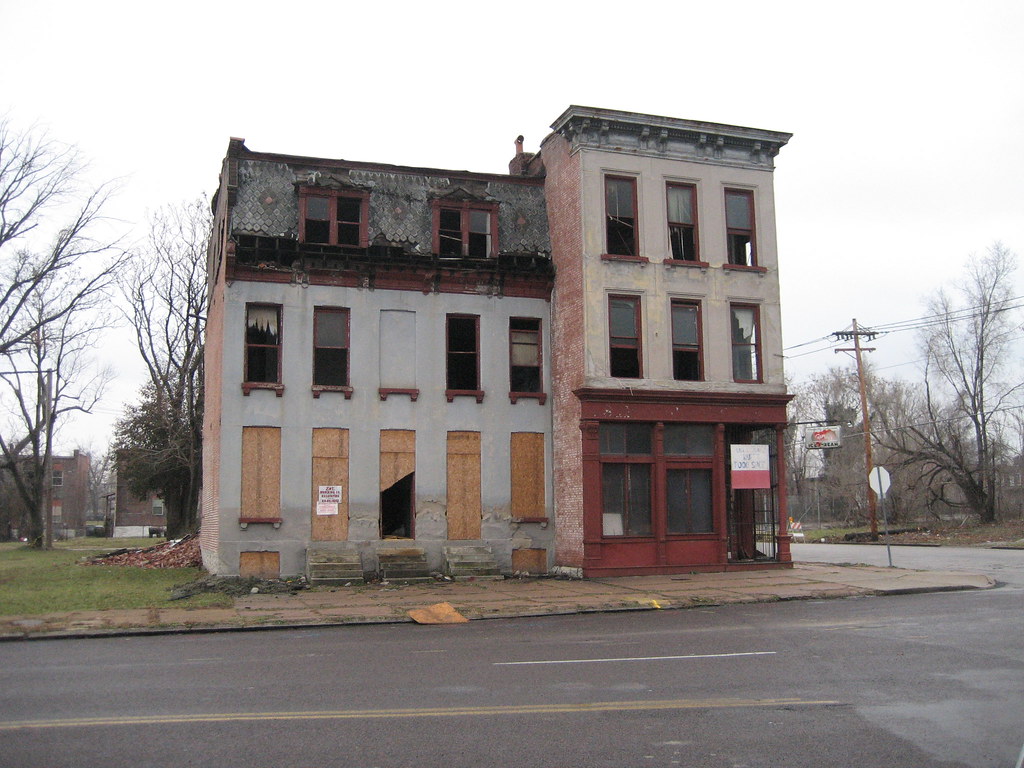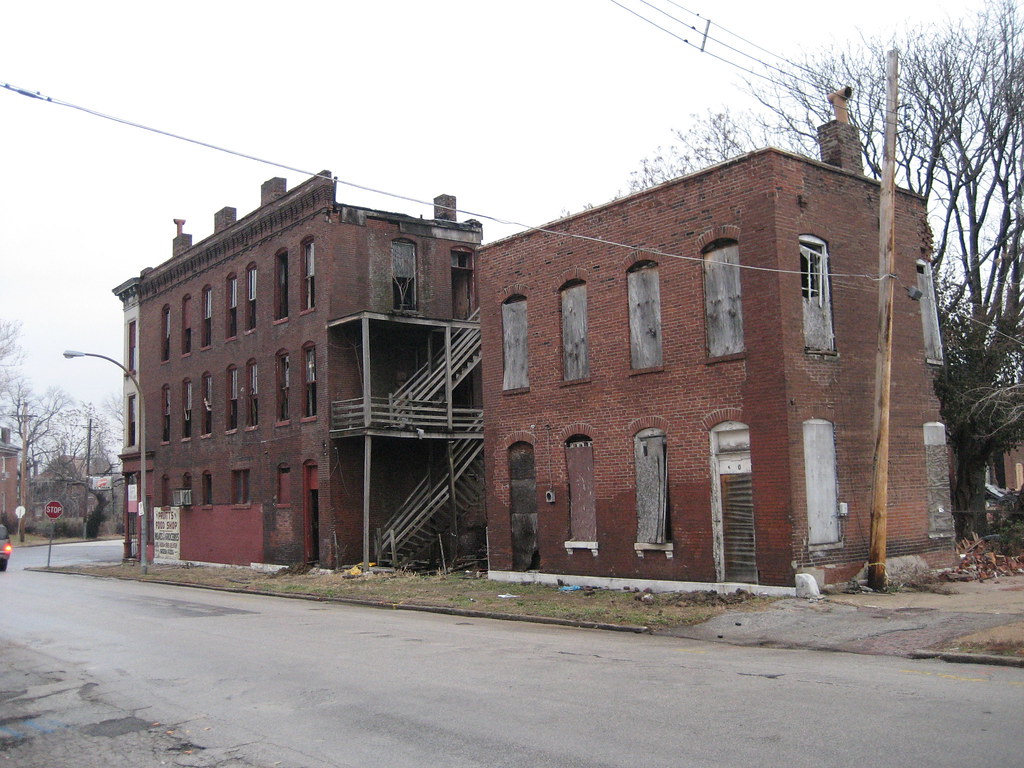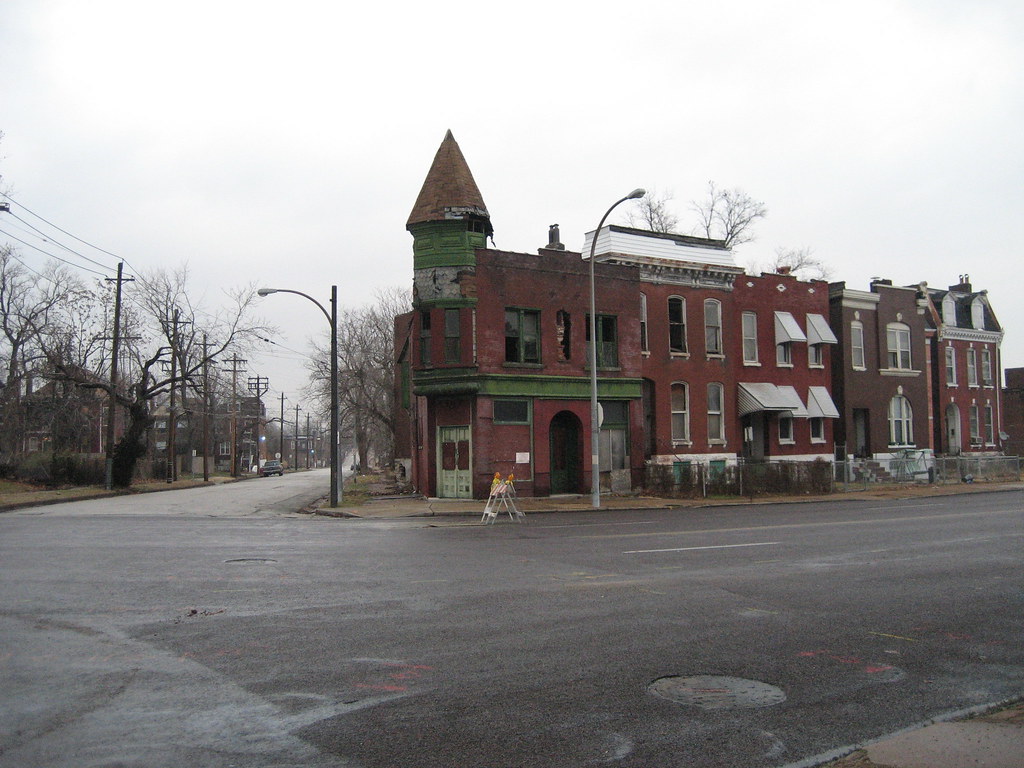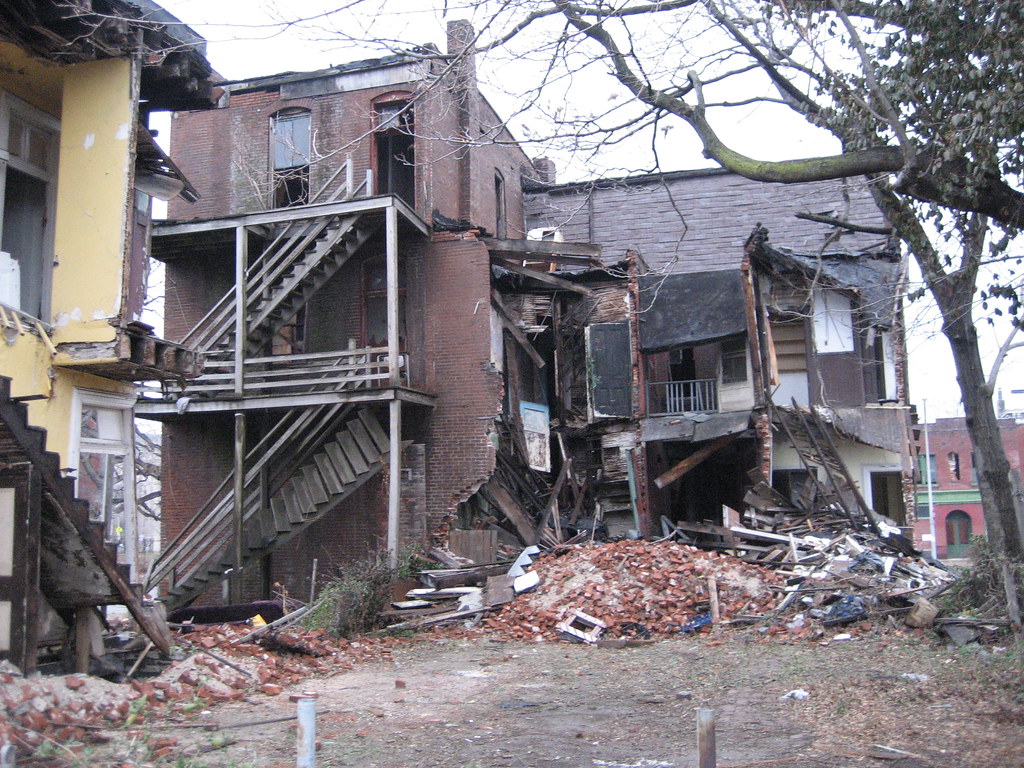by Michael R. Allen
The lovely urban setting shown here (in a photograph contributed by Anthony Coffin) will soon not exist. Shown here, looking south, are the northeast and southeast corners of the intersection of Glasgow and St. Louis Avenues in the city’s JeffVanderLou and Lindell Park neighborhoods. The west corners are occupied by historic houses, creating a contrast that is visually arresting without being jarring. The east corners are marked by these commercial buildings — the iconic, turreted flatiron and the imposing three-story stone-faced mass across the street (subject of a July 2007 blog entry of mine).
Adjacent to the three-story storefront building is an elegant stone-faced tenement building with mansard roof. Behind the storefront building is a flat-roofed two-story alley house — a vestige of the neighborhoods’ historic density. The group is a complementary group of particularly refined examples of old-school St. Louis vernacular forms. Across the street, the flatiron building is almost unparalleled among surviving commercial buildings in north St. Louis. Both the shape and the metal-clad turret (with surviving detail!) are singular. While beautiful in itself, the corner building is dramatized by the fact that it bookends a largely intact row of residences. Whoever designed the corner building understood how to finesse the dynamics of its lot shape and location.
Obviously, the corner and the neighborhood have seen better days. Three out of the four corners here are vacant and owned by holding companies controlled by Paul J. McKee, Jr. After McKee bought these buildings, trouble set in. Last year, knowing that the consequences in north city are low, brick rustlers ravaged the alley house and tenement on the southwest corner. Perhaps the bricks went to a larger brick yard just a few blocks away; perhaps they went to the county. We can be sure that the bricks have long left the city and the state, and that the buildings have since suffered partial collapses.
On December 21, the city’s Building Division ordered emergency demolition of the tenement, alley house and storefront at the southeast corner. On December 26, the Building Division ordered demolition of the flatiron and the attached city-owned house to its east. One can see that the tenement was severely damaged and that the alley house was indeed in danger of collapse. But the emergency situation of the two storefront buildings seems to be that they are near the other buildings and the Building Division needs more buildings to demolish.
Sure, the flatiron building has some brick spalling evident, mostly on its St. Louis Avenue elevation where thieves stole decorative brick awhile ago. But where are the public safety issues with it and the other commercial building? Did inspectors go inside of these buildings and find hidden conditions necessitating demolition? Or are we seeing the careless attitude that continues to render north side residents second-class citizens when it comes to historic preservation?
Looking at the details of these fine buildings is heartbreaking. The flatiron’s storefront, with corner entrance to store and punctuating brick arched entrance to the stairs, is odd. The metalwork on the turret shows sharp detail over 100 years after fabrication and painting. The slight height difference between the other commercial building and tenement along with the tenement’s setback accentuates the corner building perfectly. Intact wooden cornice details on this pair draw the eye upward. One could spend hours looking at these buildings — and must do so soon. These photographs date to last week; the alley house is completely gone as of this writing. Your tax dollars are, as they say, at work.
Here are links to the demolition permits:
2845 St. Louis Avenue (flatiron)
2854 St. Louis Avenue (tenement)
2858 St. Louis Avenue (commercial building and alley house)
(All photographs by Anthony Coffin; more here.)






